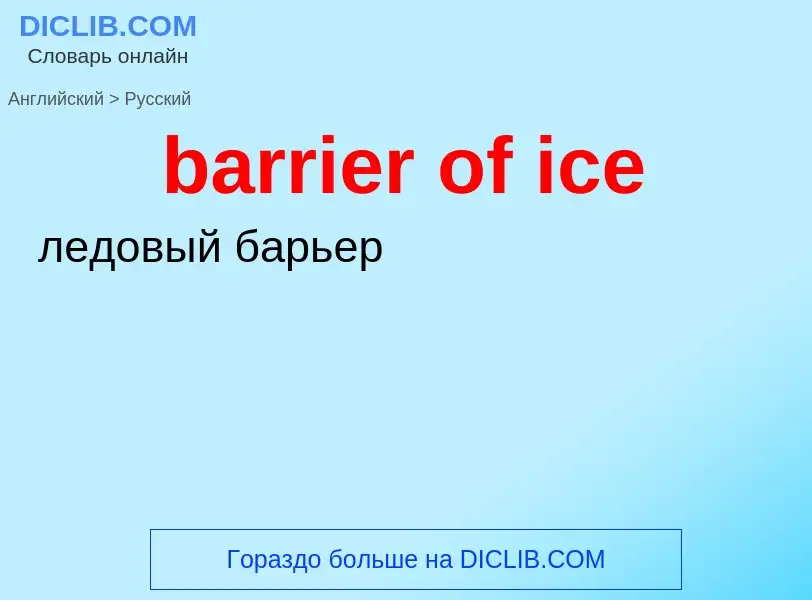Перевод и анализ слов искусственным интеллектом ChatGPT
На этой странице Вы можете получить подробный анализ слова или словосочетания, произведенный с помощью лучшей на сегодняшний день технологии искусственного интеллекта:
- как употребляется слово
- частота употребления
- используется оно чаще в устной или письменной речи
- варианты перевода слова
- примеры употребления (несколько фраз с переводом)
- этимология
barrier of ice - перевод на русский
общая лексика
дамба
перемычка для зашиты от наводнения
строительное дело
заградительное сооружение для защиты устья от штормовых нагонов
Определение
.
Википедия

The Ross Ice Shelf is the largest ice shelf of Antarctica (as of 2013, an area of roughly 500,809 square kilometres (193,363 sq mi) and about 800 kilometres (500 mi) across: about the size of France). It is several hundred metres thick. The nearly vertical ice front to the open sea is more than 600 kilometres (370 mi) long, and between 15 and 50 metres (50 and 160 ft) high above the water surface. Ninety percent of the floating ice, however, is below the water surface.
Most of Ross Ice Shelf is in the Ross Dependency claimed by New Zealand. It floats in, and covers, a large southern portion of the Ross Sea and the entire Roosevelt Island located in the east of the Ross Sea.
The ice shelf is named after Sir James Clark Ross, who discovered it on 28 January 1841. It was originally called "The Barrier", with various adjectives including "Great Ice Barrier", as it prevented sailing further south. Ross mapped the ice front eastward to 160° W. In 1947, the U.S. Board on Geographic Names applied the name "Ross Shelf Ice" to this feature and published it in the original U.S. Antarctic Gazetteer. In January 1953, the name was changed to "Ross Ice Shelf"; that name was published in 1956.




![[[Crevasse]], Ross Ice Shelf in 2001 [[Crevasse]], Ross Ice Shelf in 2001](https://commons.wikimedia.org/wiki/Special:FilePath/Ross ice shelf.jpg?width=200)
![RV ''Nathaniel B. Palmer'']] is in the distance. RV ''Nathaniel B. Palmer'']] is in the distance.](https://commons.wikimedia.org/wiki/Special:FilePath/WhalesBayIceShelf.jpg?width=200)


![MRGO]] in the background MRGO]] in the background](https://commons.wikimedia.org/wiki/Special:FilePath/IHNC Surge Barrier Construction from Air.jpg?width=200)
![The [[Maeslantkering]] closes the main entrance to the [[Port of Rotterdam]], the largest port in Europe. The [[Maeslantkering]] closes the main entrance to the [[Port of Rotterdam]], the largest port in Europe.](https://commons.wikimedia.org/wiki/Special:FilePath/Maeslantkering.jpg?width=200)


